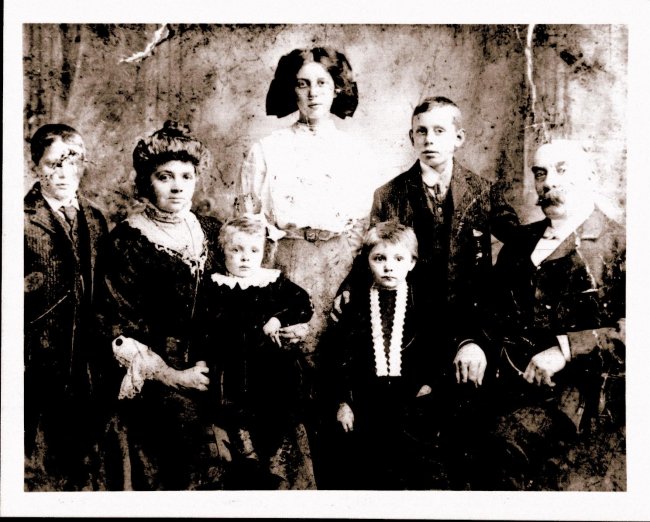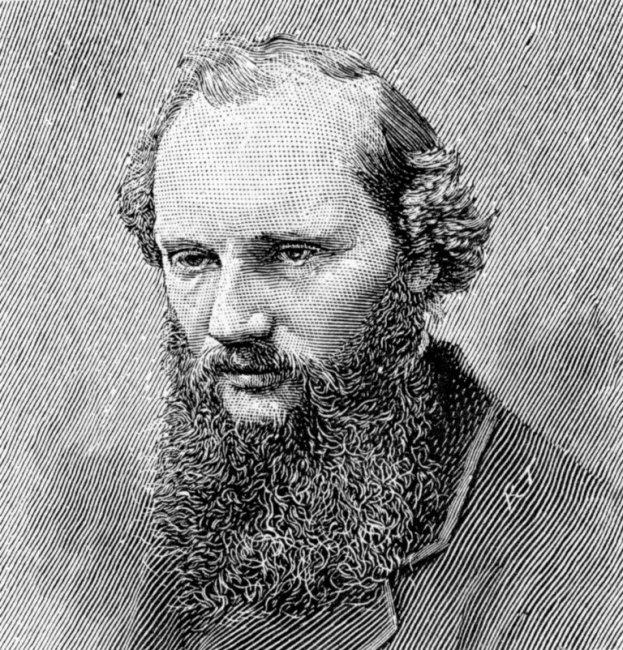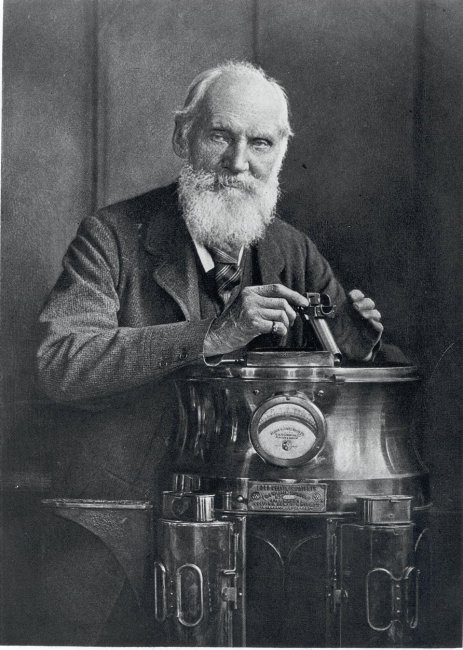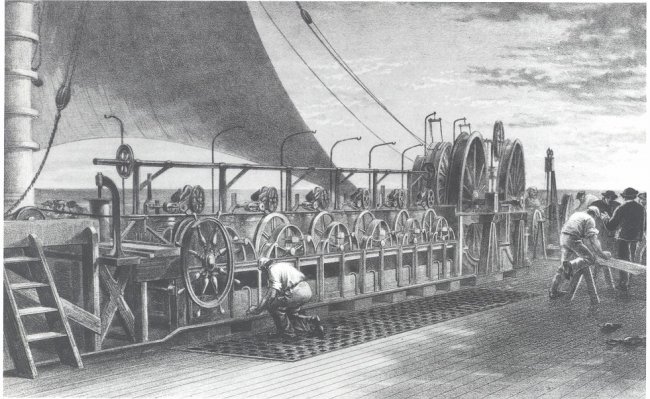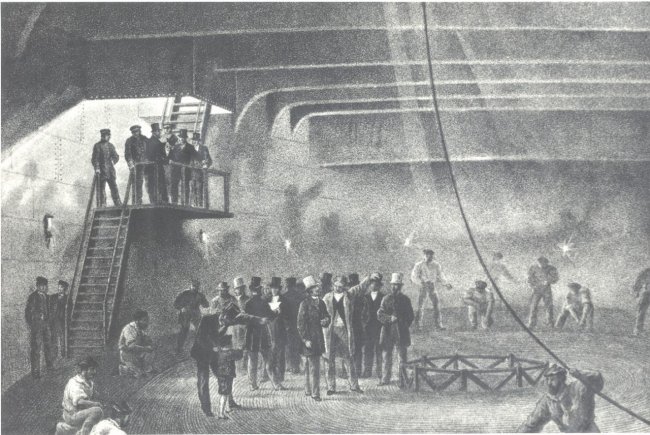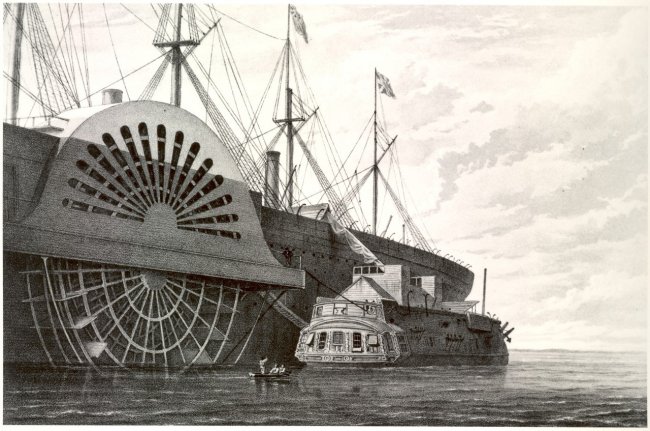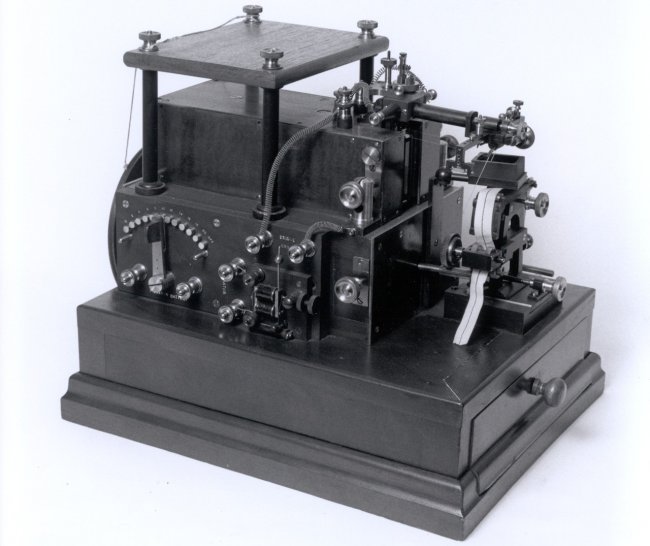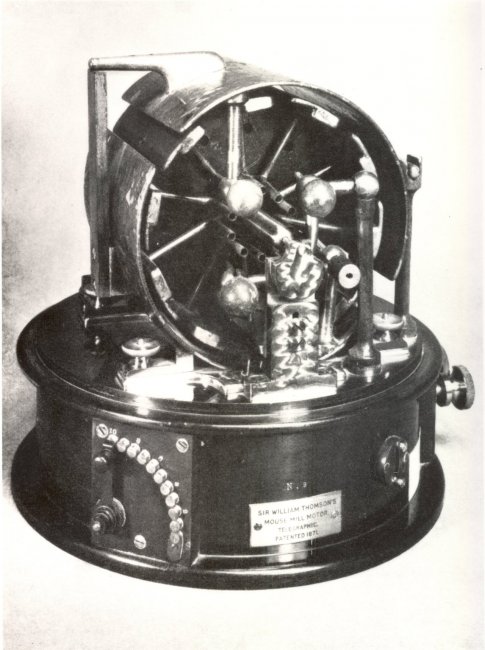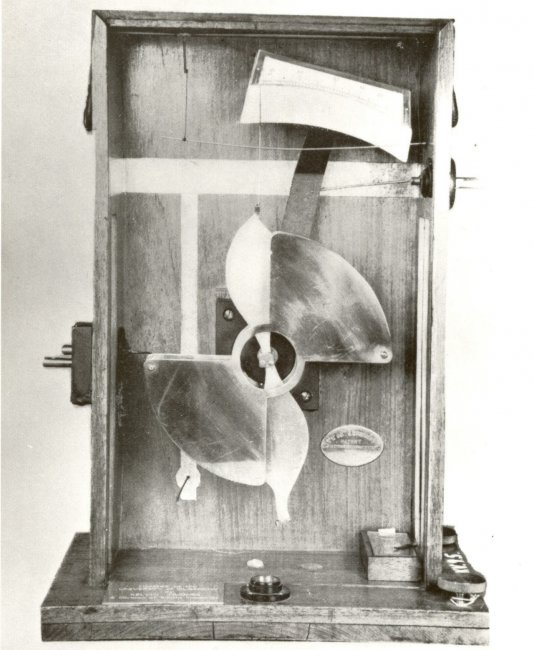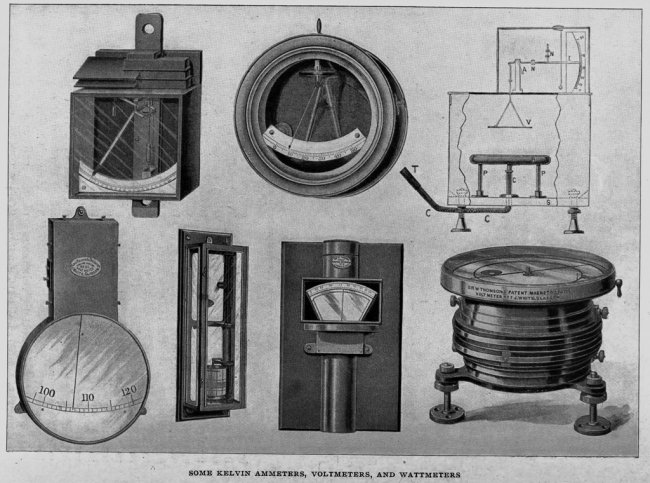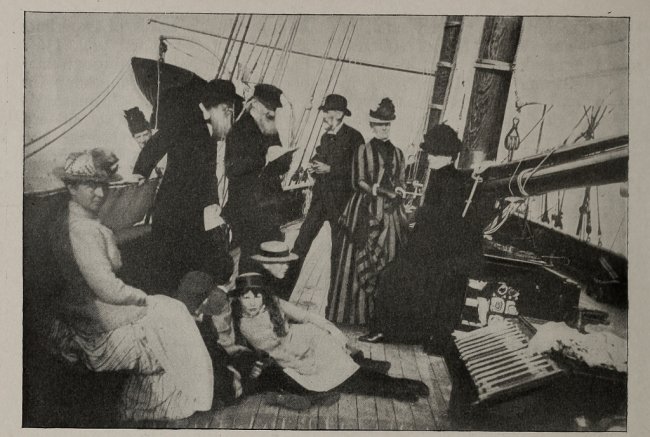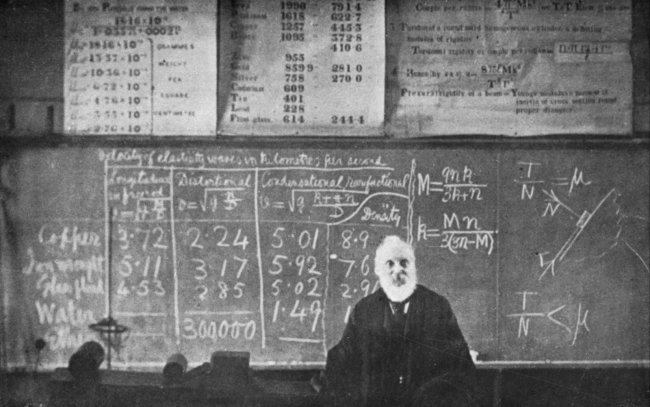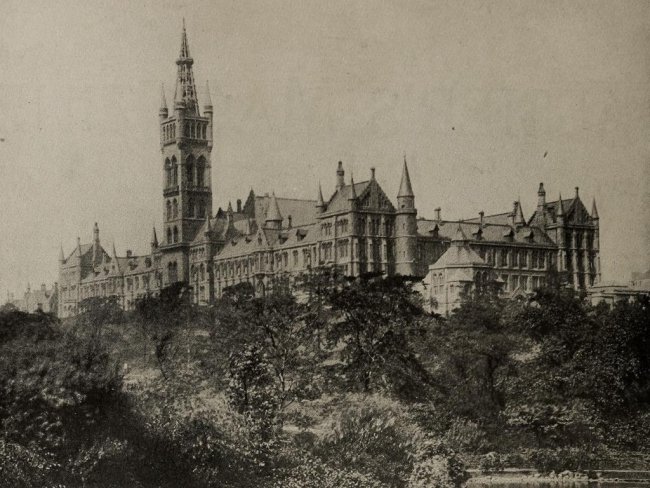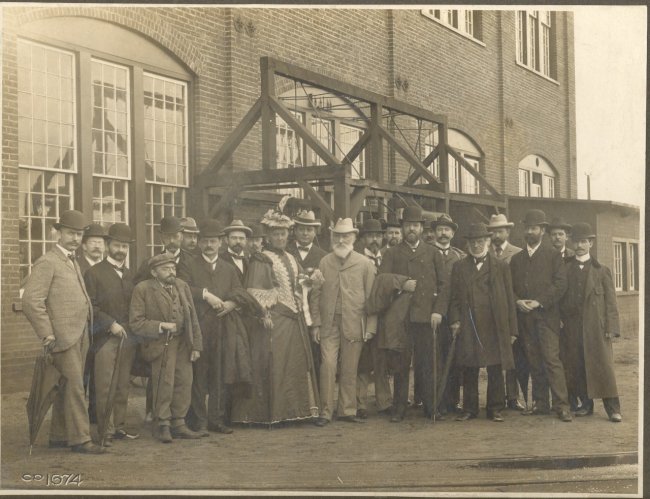William Thomson, Lord Kelvin - a biography of the famous physicist, inventor and engineer
William Thomson was born in the capital of Northern Ireland — Belfast on June 26, 1824. His Scottish father, after the death of his wife in 1830, moved with his two sons to Glasgow, where he became a professor of mathematics at a local university. The children received an excellent education at home. At the age of 8, William began attending his father's lectures, and at the age of 10 he was enrolled as a student at the university.
Being a rich man, his father traveled a lot with his sons. By the age of 12, William was fluent in four or five languages. The improvement of mathematical knowledge continued at the University of Cambridge (1841-1845). The fifteen-year-old student began to write and publish his works. His first published paper appeared in the Cambridge Mathematical Journal in May 1841. It was a defense and clarification of some fundamental theorems of Fourier's "harmonic analysis".
Showing early mathematical ability, Thomson became an excellent mathematician and at the same time became well acquainted with the modern state of physics.
James, Margaret with Janet, Helen, Peggy, William Jr., William Sr. (left to right)
The achieved results are not associated with any restrictions on personal life, privacy, etc. Thomson in life was cheerful, sociable, traveled a lot and tried not to limit himself in anything. Success accompanies him.
Thomson honed his skills as an experimenter for several months in the laboratory of the famous French physicist, member of the Paris Academy of Sciences, Henri Victor Regno (1810-1878), who was then a professor at the Collège de France. Thomson appreciated the skills acquired.
The studies ended, and the post of head of the physics department at the University of Glasgow was immediately vacated, to which the 22-year-old William Thomson was elected in 1846. The scientist finished his professorship at the venerable age — October 1, 1899, but was engaged in scientific work until the end of his life. The university recognized Thomson's merits by electing him president in 1904.
William Thomson, 1869
Thomson's scientific interests are very diverse. He spends a lot of time solving engineering problems. It is enough to note that the scientist was engaged in mathematics, thermodynamics, electrical engineering, communications, gas and hydrodynamics, astro- and geophysics. In total, he wrote more than 650 treatises, memoirs, etc.
Works on electrostatics, electricity, and magnetism began to appear in 1845. From the beginning of his teaching career, Thomson had to start setting up demonstration experiments, and as he gained experience, he began to conduct experimental tests of his own theoretical research. The results of theoretical and experimental work are often discussed with such distinguished scientists as M. Faraday and D. Maxwell.
It often happens that words are attributed to specific figures who never uttered them.William Thomson, better known as Lord Kelvin, cannot be exonerated by any court of law for claiming the death of physics in 1900 ... even though he never did. According to the popular version, and in the light of the great progress made by physics at the end of the nineteenth century, in 1900 Kelvin addressed the British Association for the Advancement of Science with the following words: “Nothing new in physics has now been discovered . Only more and more accurate measurements remain. "Kelvin's scientific trajectory is not like the trajectory of a man prone to errors of judgment of this magnitude. His privileged place on the scientific Olympus is secured by his many merits.
— Javier Janes Lord Kelvin and the End of Physics He Never Foresaw
Today, his name is particularly well known as the eponym of the International Temperature System, a designation that honors his precise calculating absolute zero about -273.15 degrees Celsius. But his contribution was significant in shaping thermodynamics, developing the mathematical formulation of electricity, and paving the way for understanding the relationship between matter and energy.
His work as an inventor and engineer led him to perfect navigational compasses, and above all he gained fame and fortune through his work in telegraphy and his efforts to promote the transatlantic cable project.
William Thomson (Lord Kelvin) with his compass, 1902.
In this short biographical article, we will focus on the works of the scientist in the field of telecommunications.
Thomson achieved his first significant practical results in the process of participating in the construction of the transatlantic telegraph line.
For several years after the invention of Morse's telegraph (1844), the countries of Europe and North America were covered with a dense network of telegraph lines, but the sales markets and sources of raw materials on other continents were beyond the reach of communications.
A mess! There was a plan to build a telegraph line between the US and Western Europe through Alaska, the Bering Strait and Siberia. The enterprise collapsed at the very beginning: the transatlantic telegraph line went into operation, and W. Thomson was largely to blame for this event.
The first attempt to lay a transatlantic cable in 1857 ended in failure — the cable was cut. Thomson immediately began to study its parameters, gave recommendations to improve the design.
Earlier (1856) he proved that the speed of propagation of a signal in a cable is inversely proportional to its resistance and electrical capacity. In 1858, to register weak telegraph signals, the scientist invented a mirror galvanometer, for which he received a patent nine years later.
Thomson himself participated in the laying of the second transatlantic cable, located on the Great Eastern - the largest ship of that time (1865). He later invented a device for automatically recording telegrams called a siphon recorder.
Thomson first began working in telecommunications in 1856, becoming a member of the Atlantic Telegraph Company, and continued to work in telegraphy and then telephony throughout his life.
The cable telegraph gave impetus to scientific electrical measurements (determining the resistance of copper and insulation, as well as the capacitance of cables).
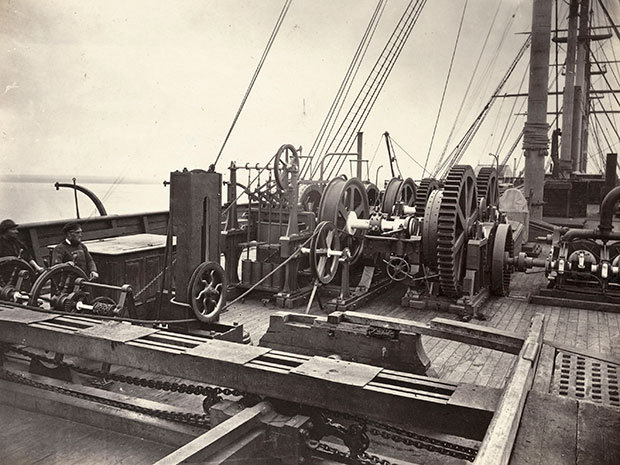
The Great Eastern was the largest ship in the world when it laid the first transatlantic cable in 1866. The iron ship was 211 meters long and carried over 1,000 kilometers of cable.
Telegraph cable to Great Eastern
Loading of the transatlantic telegraph cable to the Great East, 1866.
Telegraph trap recorder made by Muirhead & Co. Ltd. from the Ballingskelligs cable station in the Republic of Ireland. This station was opened in 1873, just nine years after the Great Eastern Voyage that laid the first successful submarine cable across the Atlantic Ocean. The siphon recorder was invented by Lord Kelvin in 1867 for use with the new transatlantic telegraph cable.
William Thomson's engine, 1871.
William Thomson's voltmeter, an early potential difference meter, circa mid-1880s
Of course, it is not possible to list all the achievements of the scientist and inventor in a small note, but we cannot help but recall Thomson's formula obtained in 1853 for calculating the resonant frequency of the oscillating circuit.
Electricity transmission and distribution also attracted his attention. In 1879, when testifying about electric transmission before a parliamentary committee, he showed that it was possible to transfer with an economy of 21,000 hp. under pressure of 80,000 volts at a distance of 300 miles. Two years later he presented a paper to the British Association entitled "The Economics of Metallic Electric Conductors".
In 1890he was appointed chairman of the International Niagara Commission, which examines, reports, and awards plans for the generation and transmission of electric power from Niagara Falls.
William Thomson was connected with a smaller business of the same nature, situated not far from his home, generating electricity at Foyer Falls, and using it for the manufacture of aluminum by the British Aluminum Company.
It may be said that no one has invented more of a variety of electrical measuring instruments for standard, laboratory, or commercial use than he.
Electrical Measuring Instruments by William Thomson
Thomson's works always find quick recognition, the awards were not late. In 1846 he was elected a fellow of Edinburgh, and five years later — of the Royal Society of London. The only sad events: the death of his father (1849) during a cholera epidemic and the death of his wife (1870).
The exploitation of 70 patents, work as a consultant in many companies (including the Marconi company) made it possible not to be ashamed of means. In 1870, Thomson bought a luxury yacht "Lalla Rukh" with a displacement of 126 tons. A little later (1874) he built a castle on the purchased estate Nisergall near the mouth of the Clyde River (Scotland). A considerable amount of time was spent traveling abroad. During one of them, the scientist visited Odessa and Sevastopol.
Lord Kelvin on yacht "Lala Rukh" 1899.
In 1858, Thomson was knighted for his success in laying the cable. In 1892, Queen Victoria awarded him the Englishman for great scientific achievements. Thus Sir Thomson became Lord Kelvin.The surname was chosen for the name of the river on the banks of which the University of Glasgow is situated.
The new lord automatically became a member of the House of Lords from 1892, where he dealt with matters of higher education, technology and the introduction of the metric system in the country. He was a member and president of many scientific societies around the world, including an honorary member of the St. Petersburg Academy of Sciences, and was awarded many honorary medals.
In 1884, the University of Heidelberg, in honor of its 300th anniversary, desiring to confer an honorary degree on him and finding that the only medical degree available to him which he did not yet possess, conferred this diploma upon him.
France made him a Grand Officer of the Legion of Honor. He was four times president of the Royal Society of Edinburgh (the Scottish National Academy of Science and Letters) and twice president of the Institution of Electrical Engineers.
At the end of a century, unparalleled in the history of the world in the progress of civilization and science, looking back and tracing the growth of the old, the beginning and development of the new sciences, and the close union of theory and practice which proves this beneficial to mankind, we we see everywhere and at every stage the remarkable work of a universal genius — William Thomson, afterwards Sir William Thomson, and now Lord Kelvin.
— JD Cormack. From an article in Cassier's Magazine 1899
William Thomson, Lord Kelvin delivering his last lecture at the University of Glasgow, 1 October 1899.
University of Glasgow, 1899.
Lord and Lady Kelvin with prominent General Electric engineers, circa 1900. Photo also shows T. Commerford Martin, Edwin W. Rice, Jr., Charles P. Steinmetz and Eliu Thomson.
Lord Kelvin's work received worldwide recognition.2,500 guests came to celebrate the 50th anniversary of his professorship. The celebration lasted for three days.
At the end of his life, Kelvin was elected president of the Royal Society of London (1900-1905), a post once held by Newton. He spent the last two years battling illness at Nethergaol, where he died on December 17, 1907. He was buried in Westminster Abbey near Newton's grave.
In 1924, the 100th anniversary of the scientist's birth was widely celebrated. The sixth issue of Electricity magazine, devoted entirely to Kelvin, came out with a red inscription on the cover: "Lord Kelvin's Number".

